#Temple of Athena Polias
Text

The exquisite and elegant braided hair of the Caryatids (421-406 BC).
Erechtheion / Acropolis of Athens, Greece.
NOTE:
A caryatid is a sculpted female figure serving as an architectural support taking the place of a column or a pillar supporting an entablature on her head.
The Greek term 'karyatides' literally means "maidens of Karyai," an ancient town on the Peloponnese.
7 notes
·
View notes
Text
30 Days of Deity Devotion
Day 11: Festivals, Days and Times sacred to this deity
Panathenaia
A multi-day Athenian festival in honour of Athena Polias and Erechtheus. The Lesser Panathenaia was an annual event, while the Greater was held every four years. There would be a great procession, and many contests. In the modern day it's around July-August and is a good time to celebrate Athena, even have a competitive game night with friends.
Link to theoi page about it.
Kallynteria and Plynteria
Kallynteria is the small festival of "Sweeping Out" where women swept out the temple of Athena in Athens. Additionally they refilled and relit her eternal flame. Plynteria was the festival where Athena's statue would be stripped of its garments and ornamentation for ritual purification. During this day the city was considered to be without its protecting goddess, and was thus an unlucky day. Temples were closed and business was not done. In the modern day it's around May-June and is a great time to do a deep clean of your home and altars.
Arrhephoria
A feast in honor of Athena, celebrated in Athens a short time after the Plynteria. During this festival, two young girls who have participated in weaving the new robe for Athena's statue will carry unknown things descend from the Acropolis down to the garden temenos of Aphrodite. There, they leave what they have brought and take something else up to the Acropolis. In modern day it's around June-July and may be a good opportunity to celebrate Athena, and to get fresh starts.
Wikipedia page on it
Khalkeia
A crafts festival honoring Athena, but also Hephaistos. It is during this festival that preparations would be made for a new peplos of Athena which would be offered to her at the Panathenaia. During this festival, the epithet 'Athena Hephaistia' would be used. In the modern day, it is around October-November and is a good day to start long-term projects, or do something crafty.
Sacred Days
In the Attic Calendar, the 3rd day of each Attic month is sacred to Athena.
#30 days of deity devotion#helpol#athena devotion#hellenistic pagan#athena#athena deity#hellenistic polytheism#paganblr#paganism#info post
6 notes
·
View notes
Text
Kallynteria & Plynteria
Athena Polias' Festival of Cleansing
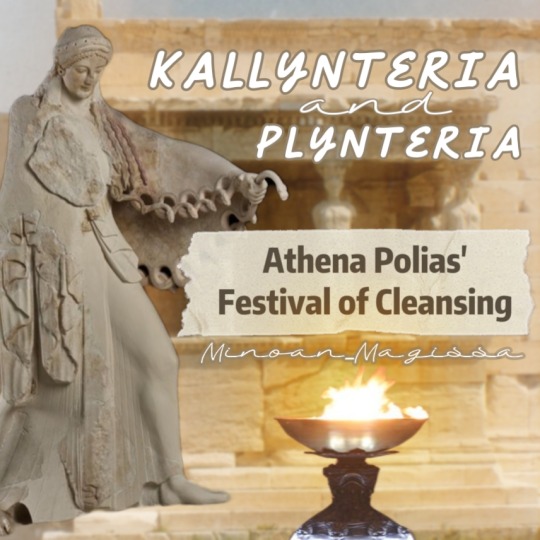
25 Thargelion (Θαργηλιών) was Kallynteria (Καλυντήρια) followed by Plynteria (Πλυντήρια) on 26 Thargelion (or the 19th/20th or 21st/22nd - there's no real concensus). Ultimately, this festival can be celebrated anytime throughout late June. The Modern Greek translations are a bit different but imply cleaning and adornment: "washing machines" and "cosmetics," respectfully.
Stemming from the words "to make good/pure" (kallyn) and "to wash" (plyn), these two days are a festival of catharsis ("sweeping out," if you will) for Athena Polias (Αθηνά Πολίας - The Protectress of The City). On Kallynteria, women thoroughly cleaned Athena Polias' temple in Athens, and her eternal flame was relit by her priestesses. On Plynteria, her statue's garments (peplos & jewelry) were removed and ritually cleansed with water from the sea. During that time, she was concealed out of respect.

The city was also deemed unprotected by its patroness and thus prone to bad luck until the cleaning was complete. To avoid any mishaps, Athenian businesses and other sanctuaries were closed on both days.
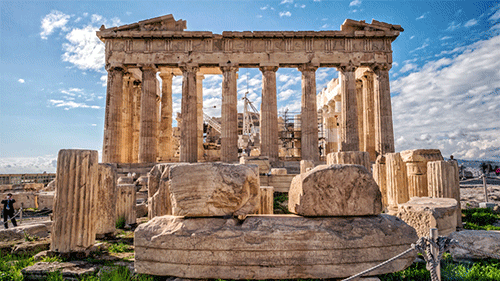
Coincidentally, Tuesday the 13th (not Friday) is considered an unlucky day to the Modern Greeks. This superstition started because The Sack of Constantinople took place on Tuesday, April 13th, 1204 (marking the culmination of the Fourth Crusade). I just find it interesting timing that Tuesday the 13th was right before the two days that were considered unlucky to the Ancient Greeks...
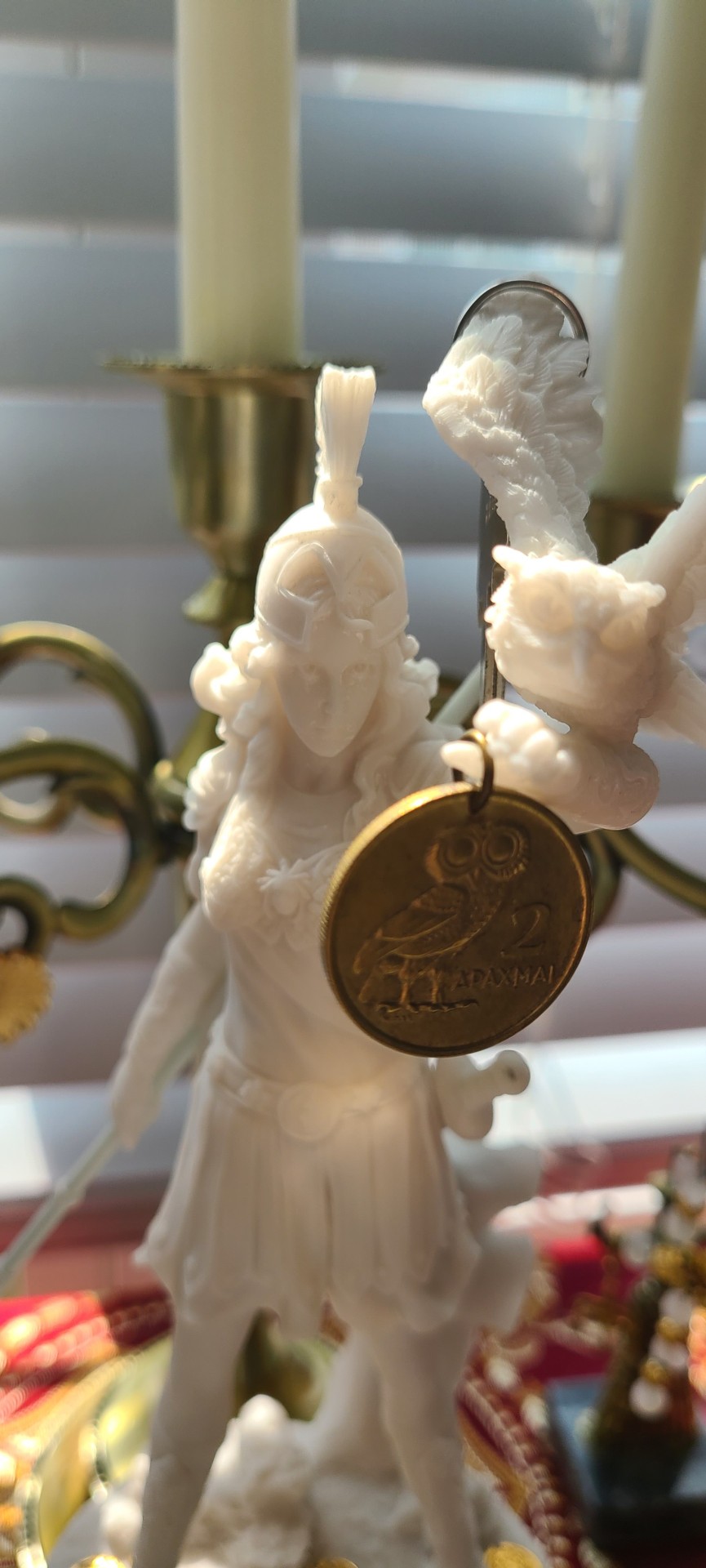
Ways to Honour Athena Polias:
clean your altar & sweep the surrounding area
light a candle as a symbol of relighting the eternal flame
clean Athena's statue (if you have one - do a visualization if not)
*No altar or statue? Consider these two days a time of pre-Solstice or late-Spring cleaning.
*I suggest washing your hands with saltwater before proceeding with the rituals.
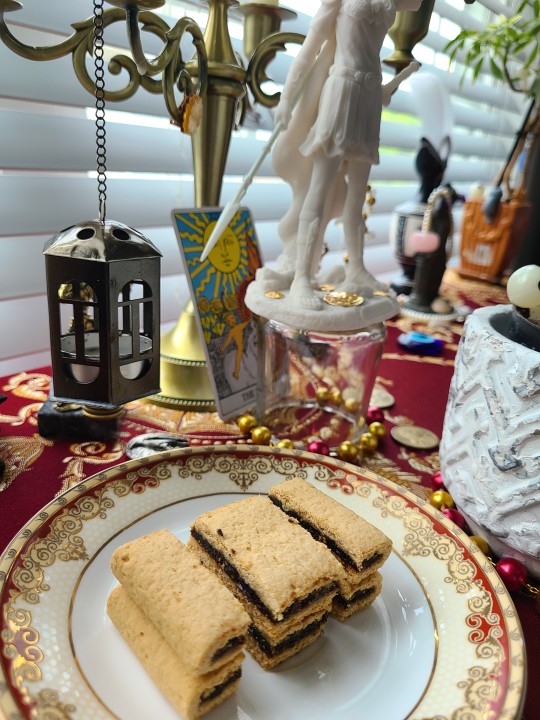
Offerings
(after everything is cleaned)
figs
fig cookies/pastries
jewelry
an ornate cloth
Source: Hellenion.org
#athena devotion#hellenic polytheism#hellenic pagan#greek mythology#hellenic religion#hellenismos#hellenic deities#athena devotee#athena#ancient greece#ancient athens#Spotify
36 notes
·
View notes
Text

The Erechtheion or The Temple of Athena Polias, Acropolis, Athens, Greece
251 notes
·
View notes
Photo

The Erechtheum, Athens, Greece
On the north side of the Acropolis, Athens, which was primarily dedicated to the goddess Athena. The building, made to house the statue of Athena Polias, has in modern scholarship been called the Erechtheion (the sanctuary of Erechtheus or Poseidon) in the belief that Pausanias' description of the Erechtheion applies to this building. However, whether the Erechtheion referred to by Pausanias is indeed the Ionic temple or an entirely different building has become a point of contention in recent decades. (Wiki)
4 notes
·
View notes
Note
Meta + spirituality (Amara)

send META + a word , a name , or phrase and i will write a head canon based off of this !!! || @malka-lisitsa || accepting
amara used to be very spiritual or rather religious. she believed in the greek gods.
her faith intensified when she was sent to work in the temples at the acropolis of athens and later was even taught as one of the handmaidens of the high priestess of athena polias. even after she worked for qetsiyah, amara continued to visit the temples often to pray and pay her respect to the gods.
after amara was (temporarily) killed and petrified by qetsiyah, amara believed she was imprisoned in tartarus. tartarus is a deep abyss in the underworld that is used as a dungeon of torment and suffering for the wicked and where souls are judged after death. she believed this was her punishment for her betrayal.
but the longer her torment lasted, the more amara lost her faith in the gods. she was aware that her betrayal was something terrible, but she also knew that there were worse people. the fact that her torments continued and never ceased was unjust and if the gods allowed it, she could not rely on their judgment.
after 2000 years of torment and pain, amara is no longer religious or spiritual.
1 note
·
View note
Text
el templo de atenea
frase
2) my grandfather fought a war with himself in the most difficult war against the Spartans
español
mi abuelo combatio una guerra con sigo mismo en la guerra mas dificil contra los espartanos
The first temple of Athena Polias, in which Erechtheus was also worshiped, was built during the Geometric period on a Mycenaean palace. The building was damaged by the Persians during the Second Persian War, but was repaired shortly afterwards. Some parts of its entablature were incorporated into the fortification wall of the Acropolis. He was the victim of a fire again in 406 BC. C., according to a passage from Xenophon, after the completion of the Erechtheion, and it was never rebuilt.14
The temple was discovered in 1885 and Wilhelm Dörpfeld was the first to identify it. Only the foundations remain on its southern side, towards the Erechtheum, along with the bases of two stone columns of the geometric temple.
ESPAÑOL
El primer templo de Atenea Polias, en el cual se rendía culto también a Erecteo, fue edificado durante el periodo geométrico sobre un palacio micénico. El edificio fue dañado por los persas durante la Segunda Guerra Médica , pero fue reparado poco después. Algunas partes de su entablamento se incorporaron al muro de fortificación de la Acrópolis. Fue víctima de un incendio de nuevo en 406 a. C., según un pasaje de Jenofonte , después de la finalización del Erecteión, y nunca fue reconstruido.14
El templo fue descubierto en 1885 y Wilhelm Dörpfeld fue el primero en identificarlo. Solo restan los cimientos de su lado sur, hacia el Erecteión, junto con las bases de dos columnas de piedra del templo geométrico.
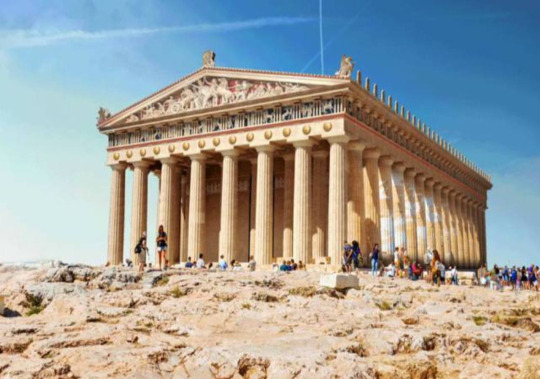
mapa de la antigua Esparta

1 note
·
View note
Photo

They are here to protect the Athena Polias's Temple!! (em Monastery of Filerimos) https://www.instagram.com/p/Cp413AoMqf8sqk4dtlbk2uX4mvYIDbhe0KTgZA0/?igshid=NGJjMDIxMWI=
0 notes
Text
In 480 BC, Persian forces led by King Xerxes I, burned down the city of Athens, as well as the Acropolis.City was destroyed during the Persian Wars, a series of conflicts which began in 499 BC and lasted until 449 BC.
At the time of the invasion, the Acropolis was home to two magnificent temples, the Hecatompedon, named for its massive size of one hundred feet in length and a smaller ancient temple dedicated to Athena Polias.
In a religious ceremony, the Athenians dug out deep holes on the Acropolis and filled them with whatever survived the Persian invasion, namely whatever was considered desecrated—thus allowing archaeologists to uncover these remnants centuries later.
#ancient#ancient greece#ancient greek#archeology#history#archeologicalsite#ancient warfare#athens greece#artifact
1 note
·
View note
Text
Day 3 - Panathenaic Festival


This morning I woke up ready and excited to attend one of the most important and significant events in Athenian culture, the Panathenaen Festival. It is just my luck that I have chosen to travel here during this special time.
The first Panathenaic Festival was held in 566 BC (Waldstein 1885). It is believed that the festival originated to commemorate the birthday of Athena (Plato). The purpose of this festival was to provide the Athenian people with a way to honor the goddess Athena Polias. Attendees could anticipate artistic competitions in music and poetry as well as athletic tournaments known as the Panathenaic Games. There were two types of Panathenaic Festivals. The Lesser Panathenaic Festival was an annual event, whereas the Greater Panathenaic Festival occurred every four years, much like the Olympic Games (Waldstein 1885).
There were many similarities between the Panathenaic Games and the Olympic Games. Both events are significant to Greek history in that they were utilized by people in antiquity as a way to honor and praise deities. The Panathenaic Games were events similar to that of the Olympic Games, in which citizens were given the opportunity to exhibit their skills, bravery, and athleticism. One difference between these games and the Olympic Games was the reward bestowed on the victors. Instead of a victory wreath, champions of the Panathenaic Games were awarded with amphorai (Waldstein 1885). Amphorai are tall ancient vases commonly used to store food items. They were crafted from clay using a pottery wheel, molded to include a handle on each side and a slender, tapered neck, and intricately decorated with a depiction of Athena in various settings (Havelock 1980). These prized vessels contained olive oil derived from the sacred grove belonging to Athena. The versatility of olive oil made this a highly desirable and sought after resource during this time period as it was used for cooking, cleaning, and lighting lanterns. Amphorai were also symbolic to the people of ancient Greece, representing wealth and power.
Another major difference between the two events was who would attend them. At the Olympic Games, only men were allowed, aside from special exceptions. The Panathenaic Festival was an event that everyone was allowed to attend, regardless of gender or status. Sometimes even slaves would be admitted to the celebrations. While attendance was open to most people, only men could participate in athletic events (Waldstein 1885).
Following the games and festivities, on the final day of the celebration, the Athenians would lead a procession up Acropolis Hill, carrying offerings and herding animals to be sacrificed in the name of Athena (Waldstein 1885). Citizens would march to the Parthenon temple which housed the grand sculpture of the goddess. The tradition was to present the statue of the goddess Athena with a decorative robe woven by young ladies delegated to complete the task (Plato). These contributions and gifts were another way the ancient Greeks showed admiration and worship to their gods.
Havelock, Christine Mitchell. “The Archaistic Athena Promachos in Early Hellenistic Coinages.” American Journal of Archaeology 84, no. 1 (1980): 41–50. https://doi.org/10.2307/504393.
Plato. “Euthyphro.” Plato, Euthyphro, section 6c. Perseus Digital Library. Accessed July 16, 2022. www.perseus.tufts.edu/hopper/text?doc=Perseus%3Atext%3A1999.01.0170%3Atext%3DEuthyph.%3Asection%3D6c.
Waldstein, Charles. “The Panathenaic Festival and the Central Slab of the Parthenon Frieze.” JSTOR. ITHAKA, January 1885. www.jstor.org/stable/495977.
1 note
·
View note
Text

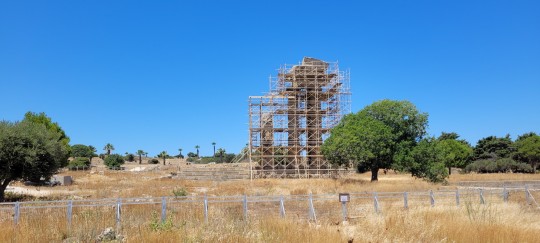

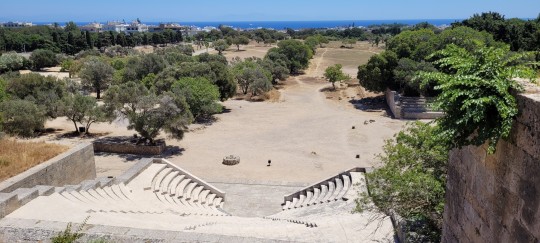

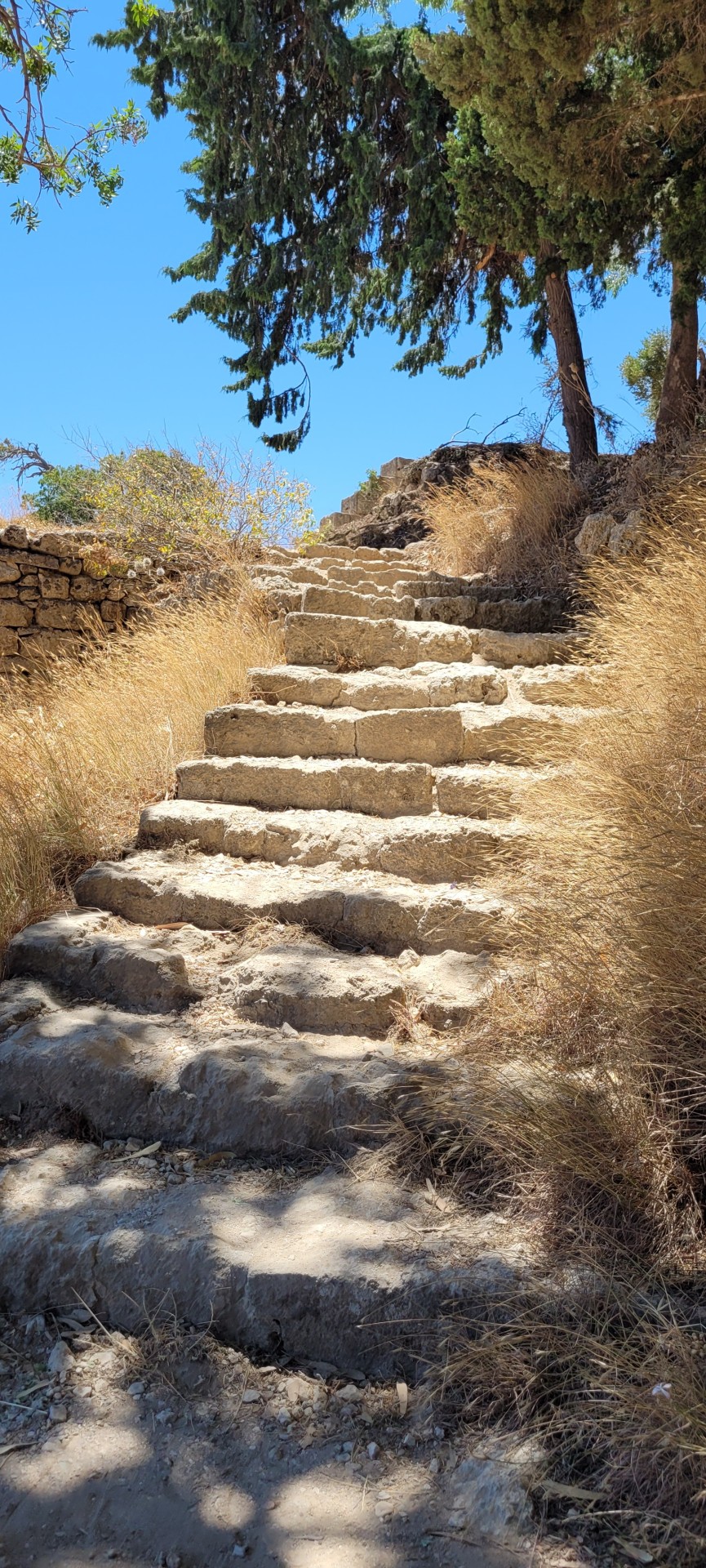
Baby's first archaeological park!
1. Temple of Aphrodite, Rhodes Old Town - Pronaos/porch view
2. Temple of Pythian Apollo, Acropolis of Rhodes - Prostylos/pronaos view; the altar would have been around the far left of this photo, I'm guessing near where the tree is.
3. Temple of Apollo - Opistodimos
4. View from below the Temple, overlooking the rest of the Acropolis. The Odeon is in the foreground, the end seating of the stadium is just visible to the right.
5. Sanctuary of Artemis/Temple of Athena Polias and Zeus Polieus - southern facade, with the Temple of Apollo in the background
6. Stairs approaching the Sanctuary and the Temple of Apollo, probably my favourite photo in this set for how the light falls
0 notes
Photo

Joseph-Philibert Girault de Prangey Athenes. 1842. T.[emple] de Min.[erve] Pol.[iade] Fa‡.[ade] O.[uest] Daguerreotype. Titled, dated and numbered in ink on label on verso. 71/2 x 91/2in. (18.9 x 24cm.) NOTES The finest Ionic building on the Acropolis, this temple, now known as the Erectheion, was begun circa 420 BC. Its site was considered especially sacred as it was said to include the tomb of Cecrops, in Greek legend the founder of Athens. The French name used by the photographer derives from the fact that in addition to other altars it housed a shrine to Athena (Minerva) Polias. Erechtheus was a mythical king of Athens. The many sacred places it covered on the Acropolis account to some extent for its complex plan in comparison with other temples there, and although of considerable importance it was built on low lying ground in order not to distract from the prominence of the Parthenon. It is best recognised today by the caryatids which support the roof of the south porch. The heavily restored west end now has an extra column at the end to complete the symmetry of the original fa‡ade, but here, as in the photograph of the Parthenon, it is obvious that little restoration had occurred before this daguerreotype was made. The large, precariously balanced, stone slabs resting on the entablature hint at the possible dangers awaiting those exploring the site at this time, particularly if laden with cumbersome photographic equipment. There are five whole-plate daguerreotypes of the Erechtheion in the photographer's archive. One other is a close variant of this view.
1 note
·
View note
Photo
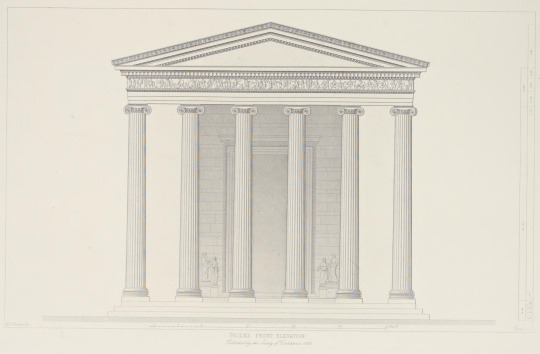

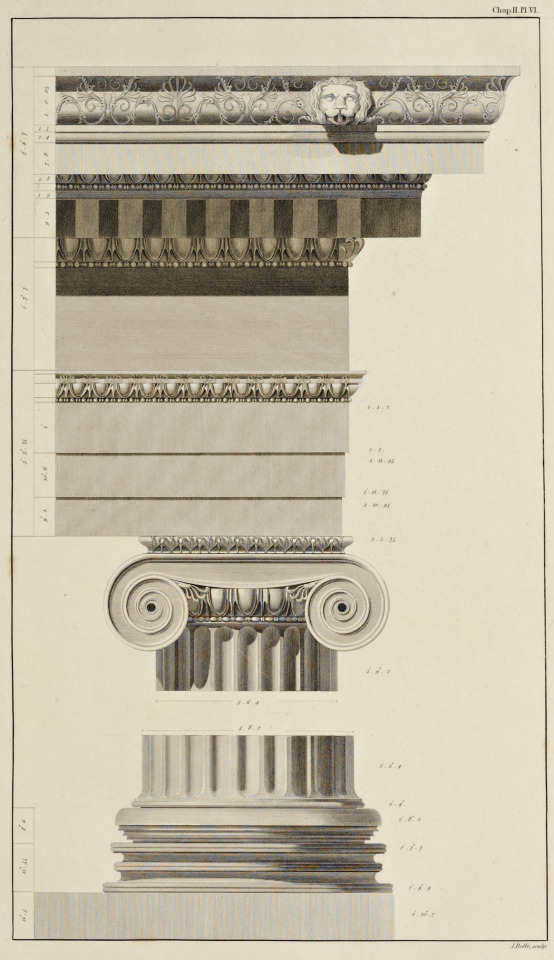



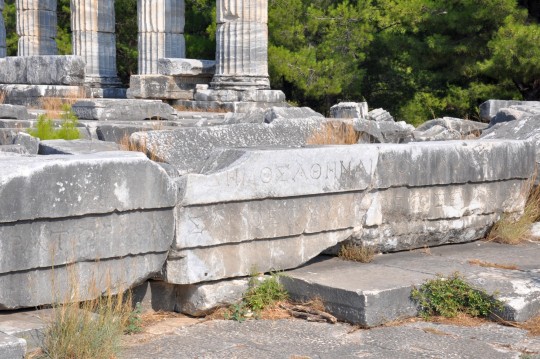

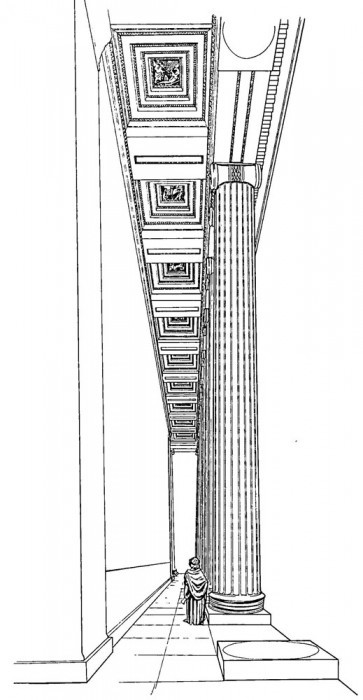

Temple of Athena Polias
Priene, Ionia, Turkey
340 BCE
The Altar of Athena & The sanctuary’s Propylon
The Sanctuary of Athena Polias at Priene, located on the culminating point of the city, rose over a wide terrace of rocks and the defense walls and was the oldest, the most important, the largest and the most magnificent building in Priene. It was oriented on an eastwest axis in conformity with the city plan and faced east.
It is believed that the construction of the Temple was begun at the same time as the founding of Priene (4th century BCE). The architect of the building was Pythius, who also constructed the Mausoleum of Halicarnassus, counted as one of the seven wonders of the world. The Temple is accepted as being a classical example of the AnatolianIonian architectural style.
The Temple, constructed in the Ionic style, consists of a pronaos (an entrance-hall), a naos (the sacred chamber where the statue of the cult was kept) and an opisthodomos (a porch at the rear). The pronaos is larger than in earlier examples. There were no opisthodomos in previous Temples; it is first seen here. Pythius has taken this characteristic from the Doric style and applied it to his plan, and has thus set a model for later Temples. The building, a combination of the Ionic and Doric architectural styles, emerges as a different architectural example.
The plan of the Temple is peripteral, with 6 columns on the short sides and 11 on the long ones. Together with the 2 columns each of the pronaos and the opisthodomos, the total number of columns adds up to 34.
The building rests on a threestepped platform (Crepis), 37.17 m. long and 19.53 m. wide. The lower diameters of the columns are one-tenth of their 10.10 m. height (a feature of the Ionic style). The columns of which the bases are built in the Ephesus type have 24 flutes in their shaft. The capitals' height is 0.48 m.
The Ionic foot (0.295 m.) is used as a unit of measurement throughout. The total column height and entablature height equal 50 feet, corresponding to half the length of the cella. The cella, of 100 feet, is thus a Hekatompedon and corresponds closely with the length of the cella of the Parthenon.
The entablature resting on the capitals consists of the architrave, made up of three hands, and above it in rising order, a row of egganddart molding, dentils. another row of egganddart molding. the cornice, and on the top a cymatium decorated with plant motifs and lion-headed gargoyles. These parts were polychromed in bright colors, red and blue being the most used.
The artist, desiring to bring to the attention only the architectural character of his work, has put in no other decorations. There are no sculptural examples except the cult statue. Only a woman's head, revealed in the excavations, may have been one of the votive statues on display in the pronaos.
When Alexander the Great came to the region, he made a donation in 334 BCE for the completion of the Temple. This is also proven by an inscription on a tablet belonging to the Temple, and now in the British Museum, which reads, "King Alexander has dedicated this Temple to Athena Polias".
However, the fact that architectural elements found on the west or rear side of the Temple carry characteristics peculiar to the 2nd century BCE shows that due to various but especially to economic reasons the building could not be completed up to that period. It is understood that the Temple was completed by the donation made in 158157 BCE by Prince Orophernes mentioned in the history of the foundation of the city. That the Altar and the new cult statue were also erected ca. 158156 BCE is proved by the silver coins found under the base of the statue.
The cult statue of Athena was a copy of the statue of Athena Parthenos made by the famous sculptor Phidias for the Parthenon. However, it is half the size. One sees the image of the statue on coins dating from the Roman period. The standing Athena, with a helmet on her head, is seen with goatskin, spear, and shield. In her right hand, she holds a Nike. Fragments of the goldplated bronze wings of Nike, and fragments of the marble left foot and arm of the Goddess, indicate that the statue was 6.5 meters high.
After 27 BCE, the Sanctuary was rededicated to Athena Polias and Augustus and continued as an important cult center throughout the Imperial period. On the architraves of the Temple and the Altar, inscriptions are indicating that the Temple was dedicated to Emperor Augustus as well as to Athena. The propylaeum, located to the east of the building, is believed to have been built during the reign of Augustus. This monumental gateway, of which the front stairs and part of the south wall are still standing, was connected to the street in front. A six stepped flight of stairs which could be ascended on all three sides led to a porch with four Ionic columns, and from there one could reach through a single door, a large space again with four columns. According to the elements found the building had a pediment and a roof.
More Priene buildings
Other temples of Athena
#art#Architecture#travel#history#turkey#asia#ionia#greek#greece#greek art#Greek architecture#athena#athena polias#ionic#temple#priene#mythology#Greek Mythology
378 notes
·
View notes
Text

Temple of the goddess Athena Polias, Priene / Turkey.
#visit turkey#travel#turkiye#turkey#ruins#Priene#goddess#Athena Polias#History#Culture#UNESCO#turquie#Turkei#Izmir
214 notes
·
View notes
Photo

Greek oil lamp in shape of a ship, end of the 5th century BC
The oil lamp with the inscription ΙΕΡΟΝ ΤΗΣ ΑΘΗΝΑΣ (Sanctuary of Athena) was discovered inside the Erechtheion. Its form is linked to the celebration of the Panathenaia and the worship of Athena Polias, whose wooden cultic statue (xoanon) was kept in the old Athena Temple.
During the last day of the celebration, the Athenians offered to the xoanon a new peplos, which, after the victory at Salamis, was transported hung like a sail on the mast of a warship -most possibly on one of the victorious triremes of the naval battle– which moved on wheels. The lamp possibly reproduces the features of this ship.
247 notes
·
View notes
Photo
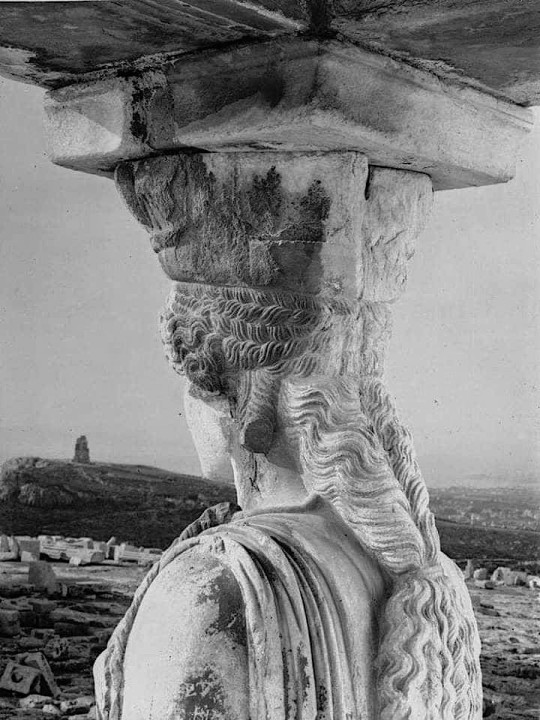
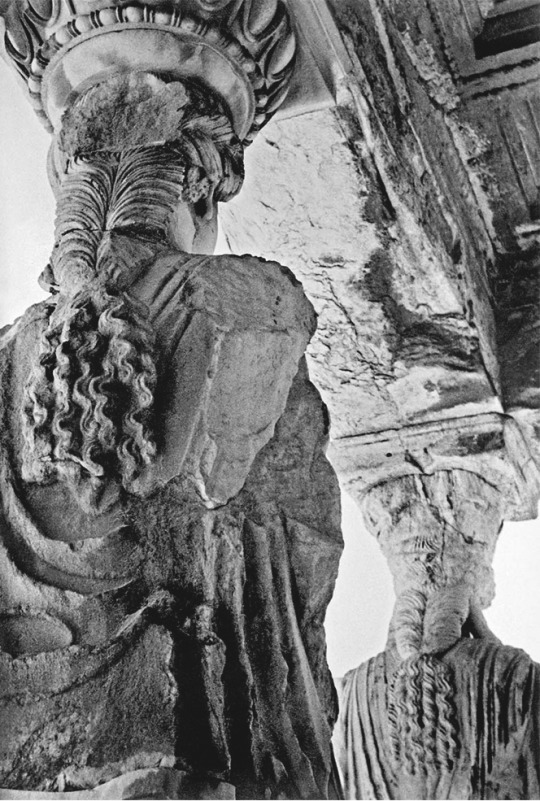

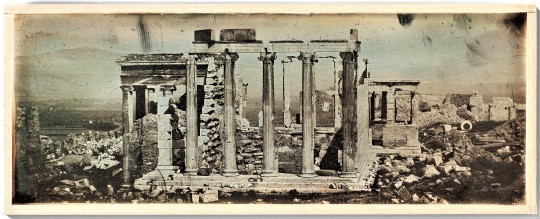
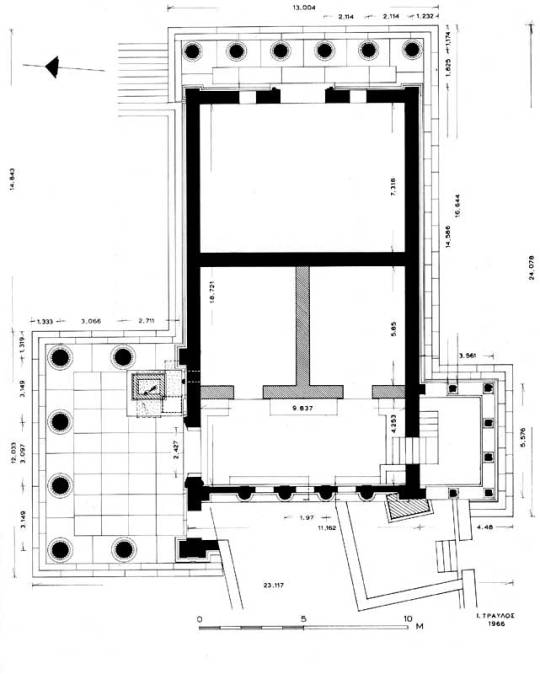

Erechtheion 421 - 406 BC
Caryatid back 3/4, Erechtheion, Acropolis
Elli Sougioultzoglou-Seraidari (Nelly’s). Caryatids of the Erechtheion, 1932-39
Jacqueline LaRocca: Erechtheion-Acropolis. Black and White Photography
Joseph-Philibert Girault de Prangey: 62. Athènes. Temple de Minerve Poliade. Daguerreotype, 1842. The first photograph of the Erechtheion.
Reconstruction plan according to J. Travlos, Bildlexikon zur Topographie des antiken Athen, Tübingen 1971
Caryatid’s braided hair - British Museum
The Caryatid porch of the Erechtheion in Athens, Greece. These are now replicas. The originals are in the Acropolis Museum (with one in the British Museum).
The Erechtheion, designed by the architect Mnesikles, was a complex building constructed in the last twenty years of the 5th century BC. It replaced the “Archaios Naos” (Ancient Temple) of Athena Polias, part of which had been destroyed by the Persians sixty years earlier. The new temple was divided into two chambers: an eastern room dedicated to Athena, which held the goddess’ wooden cult statue; and a lower western room that accommodated shrines of Poseidon-Erechtheus, Hephaistos and Boutes, the brother of Erechtheus.
The Erechtheion’s unusual form resulted from the architect’s need to accommodate all of these cults within one building, while also adapting its structure to the site’s uneven ground. Moreover, the complex had to incorporate the sacred symbols of Poseidon’s struggle with Athena for hegemony over Αthens: the olive tree given to the city by Athena; the marks in the bedrock left by Poseidon's trident; and the spring of salty water that arose after he smote the rock. - The Acropolis Museum
#Erechtheion#Acropolis#Caryatid#Athena#Minerva#temple#Athens#gr#iconic#Architecture#marble#Hair#back
357 notes
·
View notes